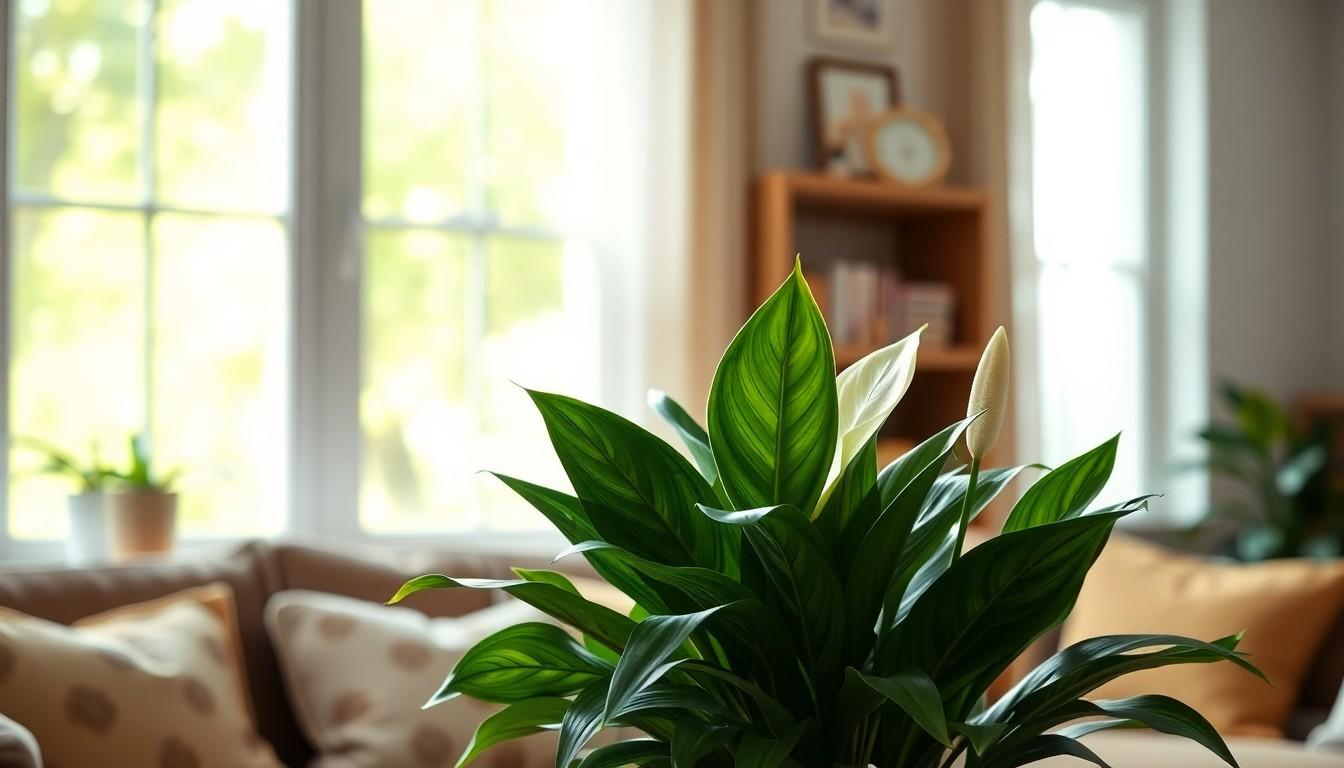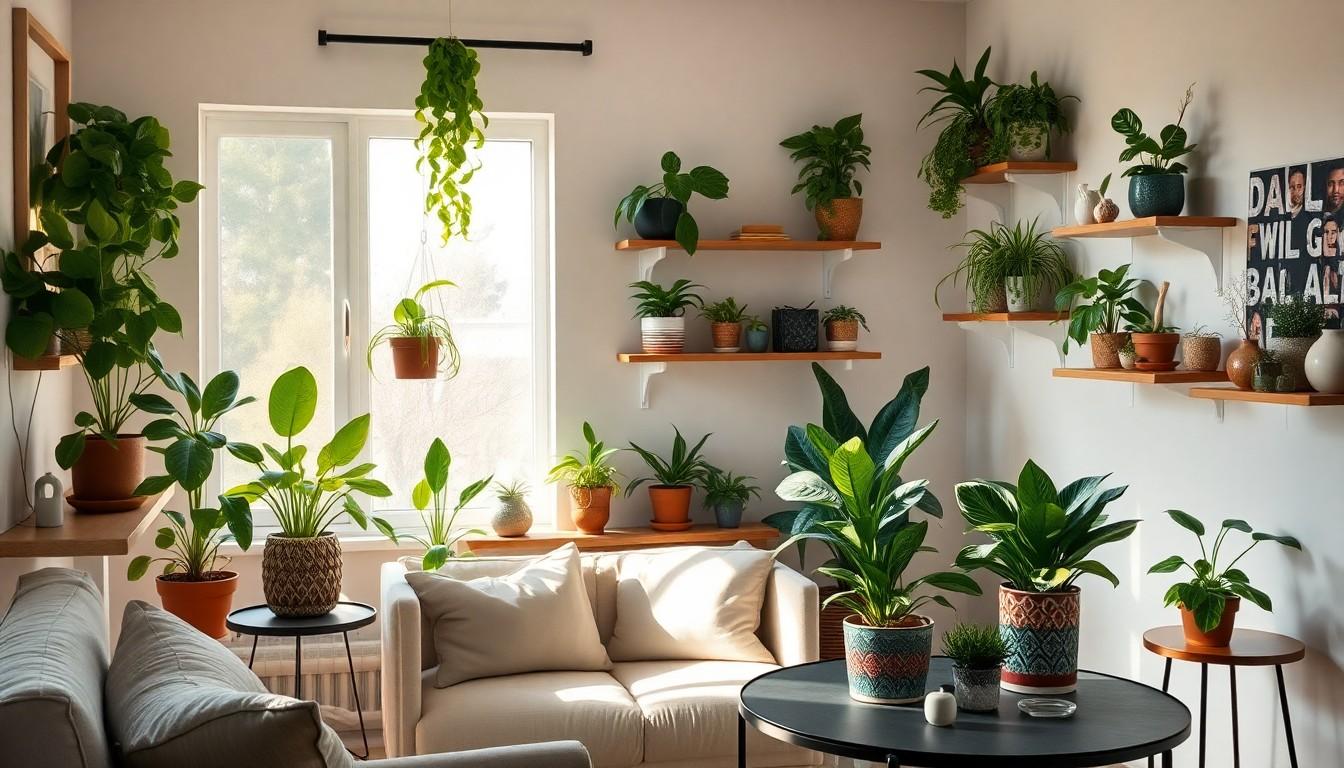Ever walked into a room so dark it felt like a cave? Fear not, plant lovers! You don’t need a sun-drenched greenhouse to enjoy the beauty of indoor plants. In fact, some of the most resilient greenery thrives in low-light conditions, making them perfect for those shadowy corners of your home.
Overview of Dark Room Low Light Indoor Plants
Selecting the right plants for dark rooms enhances indoor aesthetics. Numerous plant species adapt well to low light conditions, providing vibrant greenery without needing bright sunlight. Popular options include snake plants, which tolerate neglect and infrequent watering, and pothos, known for its trailing vines and air-purifying qualities.
ZZ plants thrive even in severely dim environments. Their glossy leaves reflect light, maintaining a lively appearance. Additionally, peace lilies flower in low light, producing beautiful white blooms and improving indoor air quality.
Consider the philodendron, which features heart-shaped leaves and can tolerate various lighting conditions. Its ability to adapt makes it a popular choice. Another noteworthy plant is the cast iron plant, renowned for its resilience and ability to thrive on minimal care.
Various sizes and shapes exist among low light plants, ensuring versatility in decor. The dracaena family includes several species, such as the dracaena marginata, which grows upright and offers lush foliage. Low light indoor plants not only beautify spaces but create calming environments as well.
When nurturing these plants, less frequent watering is recommended. Overwatering can lead to root rot, a common issue for indoor plants. It’s essential to assess moisture levels in the soil before watering, promoting healthier growth.
Cultivating dark room low light plants provides an opportunity to enjoy nature indoors, regardless of lighting constraints. Their resilience and adaptability will add a touch of green to any space, enhancing overall wellbeing.
Benefits of Low Light Indoor Plants

Low light indoor plants offer various benefits that enhance indoor living spaces. They create healthier and more aesthetically pleasing environments.
Air Purification
Air purification is a significant advantage of low light indoor plants. These plants naturally filter harmful toxins from the air, improving indoor air quality. Research by NASA indicates that certain species can eliminate pollutants like formaldehyde, benzene, and trichloroethylene. Snake plants and peace lilies excel in this area, making them ideal choices for homes and offices. Improved air quality contributes to better overall health, reducing risks of respiratory issues and allergies.
Aesthetic Appeal
Aesthetic appeal plays a critical role in the popularity of low light indoor plants. Their diverse shapes and rich green colors enhance the overall decor of any room. Adding plants such as pothos and ZZ plants can transform dull spaces into vibrant areas. Visual interest increases with these lush greens, softening harsh lines of furniture and walls. Positioning plants helps create focal points and adds layers to interiors. Whether you’re refreshing your space or planning to print custom invitations for a housewarming or plant-themed gathering, a touch of greenery brings life and warmth to the setting. Inviting greenery indoors not only brightens spaces but also fosters a calming atmosphere that promotes relaxation and well-being.
Best Dark Room Low Light Indoor Plants
Low light indoor plants offer an excellent solution for darker spaces, thriving with minimal sunlight while enhancing indoor aesthetics. Several varieties stand out for their resilience and adaptability.
Snake Plant
Snake plants tolerate neglect and low light. This hardy plant features tall, sword-like leaves that come in vibrant green and yellow variegation. Snake plants filter toxins like formaldehyde and benzene, improving indoor air quality. Placing a snake plant in a room can create a striking focal point while boosting overall wellness. Watering occurs infrequently, making care simple for beginners.
Pothos
Pothos are known for their trailing vines and heart-shaped leaves, which range from solid green to variegated combinations of green and yellow. These plants adapt to various lighting conditions, thriving even in low light. They also excel in air purification, filtering pollutants effectively. An ideal choice for hanging baskets or high shelves, pothos add a touch of elegance to any space. Regular watering maintains their vibrant appearance and encourages growth.
ZZ Plant
ZZ plants exhibit glossy, dark green leaves that reflect light beautifully, making them visually appealing. These plants require minimal maintenance and develop well in low light. ZZ plants improve air quality by removing harmful toxins from the environment. Their unique, almost sculptural form adds interest to any room. Watering should be minimal, as they store moisture in their thick stems, ensuring they remain healthy with little effort.
Care Tips for Low Light Indoor Plants
Taking care of low light indoor plants requires specific attention to their unique needs. Proper maintenance ensures these plants thrive and enhance indoor spaces.
Watering Needs
Water less frequently than bright light plants. Checking the moisture level before watering prevents root rot. Use the finger test; if soil feels dry an inch below the surface, it’s time to water. Snake plants and ZZ plants tolerant drought can last longer between waterings. Pothos and peace lilies may need moist soil, but avoid sogginess. Adjust watering schedules based on seasonal changes; plants need less water in winter months. Overall, consistent but controlled moisture levels promote healthy root systems.
Fertilization Frequency
Fertilizing low light indoor plants helps maintain their vigor. Use a balanced, water-soluble fertilizer diluted to half strength during the growing season, usually spring and summer. Every four to six weeks works well for most species. Over-fertilizing can harm plants, so it’s wise to reduce applications in fall and winter when growth slows. Peace lilies benefit from higher phosphorus levels to encourage blooming, while snake plants appreciate minimal fertilization. Adjust based on each plant’s response; if growth appears stunted, consider increasing the feeding schedule.
Common Issues and Solutions
Low light indoor plants benefit from understanding their unique challenges. Overwatering typically leads to root rot, especially in plants like peace lilies. Less frequent watering solves this problem, so checking moisture levels becomes essential.
Another common issue involves poor growth or yellowing leaves. Insufficient light can cause this, even for low-light tolerant plants. Positioning them in a slightly brighter area may stimulate healthier growth without direct sunlight.
Pest infestations can also occur, particularly with plants that have dense foliage. Regularly inspecting for pests like spider mites or mealybugs helps catch issues early. Wiping leaves with a damp cloth removes dust and can deter pests.
Temperature fluctuations can impact plant health, causing stress and weakening them. Keeping plants in stable environments away from drafts or heating vents improves their resilience.
Fertilization mistakes can hinder growth, especially in plants like snake plants that require minimal nutrients. Following a schedule of light fertilization during the growing season enhances their health without risking over-fertilization.
Finally, sudden changes in the environment can shock plants, leading to poor performance. Gradually acclimating them to new locations helps mitigate stress. Overall, addressing these common issues ensures low light indoor plants thrive in even the darkest spaces.
Conclusion
Low light indoor plants offer a fantastic solution for those seeking to bring greenery into their homes without relying on abundant sunlight. These resilient species not only beautify spaces but also contribute significantly to improved air quality and overall well-being. By choosing the right plants and following proper care guidelines, anyone can create a thriving indoor oasis, even in the dimmest corners.
With the right knowledge and attention, low light plants can flourish, transforming any room into a serene retreat. Embracing these hardy plants enables individuals to enjoy the numerous benefits of nature indoors, enhancing both aesthetics and health in their living environments.

